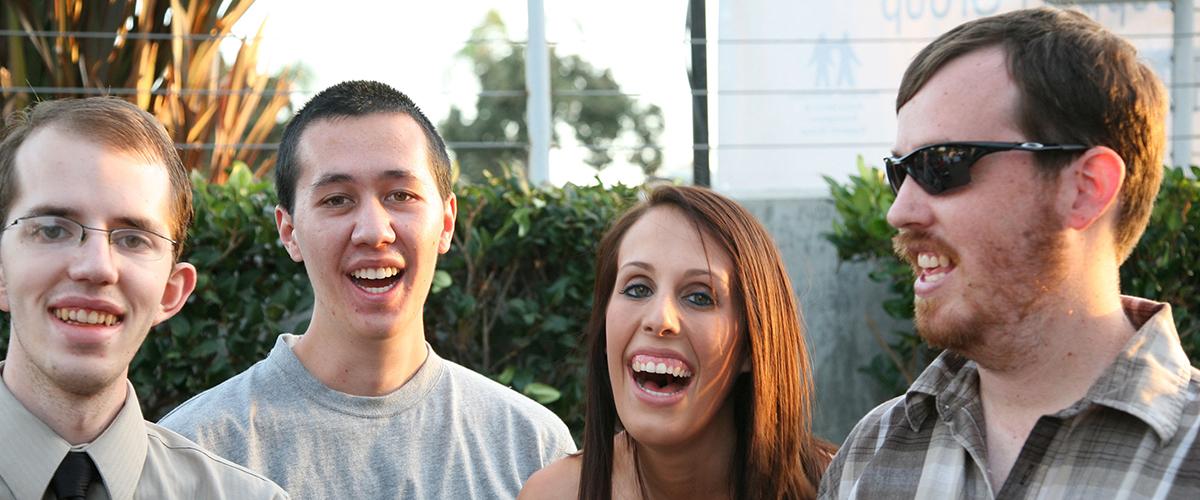The Myotonic Dystrophy Foundation made the following grants in 2025:
2025 MDF Early Career Scholars:
Lukasz Jakub Sznajder, Ph.D.
Assistant Professor
University of Nevada, Las Vegas, NV, US
DM2 has been significantly less studied than DM1, with no approved treatments or clinical trials available. Developing tailored therapeutic approaches based on the specific molecular mechanisms of DM2 is crucial. While both DM types share some molecular features, DM2’s mechanism is more complex. Evidence suggests that DM2 results primarily from the toxicity of expanded CCUG RNA repeats, but the exact form of the toxic RNA remains unclear. Previous studies have shown that these repeats are retained in aberrantly spliced mRNA, which is exported to the cytoplasm—a crucial discovery in understanding DM2. This project “Probing Expanded RNA Species and Their Role in DM2” aims to test whether mRNA with retained CCUG repeats is a key pathogenic molecule in DM2 and to develop therapeutic strategies to prevent such retention. Furthermore, a cost-effective method will be created to detect and quantify intron retention. Using DM2 cell lines and tissues, along with bioinformatics and molecular biology tools, this project will provide insights into the DM2 mechanism and lay the groundwork for future therapeutic development. Click here to read more about Dr. Lukasz Jakub Sznajder.
Scott Uhlrich, Ph.D.
Assistant Professor, Director of Movement Bioengineering Laboratory
The University of Utah, Salt Lake City, UT, US
While new drugs are in development for DM1, clinical trials are limited by inadequate outcome measures for evaluating effectiveness. Existing measures, such as the 10-meter walk test, are not sensitive to subtle changes in movement quality or the many aspects of daily function that impact quality of life. This project “Novel digital functional outcome measures for myotonic dystrophy using smartphone video” aims to develop a digital functional outcome measure using OpenCap, a software that measures human motion with two smartphone cameras. The project has two goals: 1) create a video-based measure that captures multiple activities affected by DM1, using machine learning to assess deviations in movement; and 2) test the feasibility of home-based assessments with a single smartphone camera. By measuring daily function remotely, this new approach could improve sensitivity, reliability, and accelerate clinical trials for DM1 treatments. Click here to read more about Dr. Scott Uhlrich.
Short Term, High-Priority Grants:
Katarzyna Taylor, Ph.D.
Research Assistant Professor
Adam Mickiewicz University (Uniwersytet im. Adama Mickiewicza w Poznaniu), Poznan, Poland
MBNL plays a crucial role in promoting alternative splicing patterns and maintaining cell differentiation. In DM1, the depletion of the MBNL pool impairs cellular function. Current research focuses on strategies to replenish functional MBNL levels, as uncontrolled overexpression can lead to negative consequences. Understanding and regulating the endogenous expression of MBNL is essential, as mild increases in MBNL concentration can avoid adverse effects. Fine-tuning MBNL levels may provide novel therapeutic opportunities, potentially in combination with other treatments. A molecule targeting MBNL expression is currently undergoing clinical trials. However, the mechanisms regulating MBNL expression remain largely unexplored. The project “Identification of novel molecular mechanisms of MBNL1 expression as potential DM therapeutic targets” aims to identify novel regulatory elements controlling MBNL1 expression, expanding therapeutic targets and contributing to the development of personalized or combination therapies based on disease onset, progression, and individual patient response.
Samuel Carrell, M.D., Ph.D.
Assistant Professor of Neurology
Virginia Commonwealth University, Richmond, VA, US
Individuals with myotonic dystrophy exhibit common symptoms such as muscle weakness, cramping, heart rhythm issues, and cognitive difficulties. However, the age of onset, severity, and specific symptoms vary widely among patients. The disease is caused by an expansion in a gene’s repetitive sequence, which correlates with the timing of symptom, though only about 20% of the variability is explained. This uncertainty complicates clinical trial planning and medical care. Given this variability, the project “Identifying Genetic Sources of Disease Variability in Myotonic Dystrophy Type 1” hypothesizes that additional genetic factors contribute to or protect against disease manifestations. To identify these genes, Dr. Carrell plans to systematically knock out each gene in muscle progenitor cells derived from patients with DM1 and DM2. By measuring activity, he will sort the cells based on their response and validate the genes that influence disease progression, paving the way for future research to understand their impact on DM patients.
Pilot Grants:
Stephanie Tome, PhD
Research Associate
Sorbonne Université-Inserm UMRS974, Paris, France
Unfortunately, current methods for analyzing the genetic repeats in DM2 are limited. This makes it difficult to understand the relationship between genetic factors and symptoms, how the disease progresses, and what influences its severity. As a result, DM2 is not well understood, and the lack of clear links between genetic and genomic factors and clinical symptoms and disease progression complicates study design, hypothesis testing, clinical trials, genetic counseling, thereby offering little predictive information about the disease's course. The goal of the study, “Redefining the Genotype-Phenotype Paradigm in Myotonic Dystrophy type 2”, is to use advanced genome sequencing technologies to better study the repeat region (size and composition) and to understand how genetic factors are linked to symptoms in DM2. By analyzing data from a large group of DM2 patients, the researchers hope to improve diagnosis and prognosis, ultimately leading to better care and support for people living with DM2.
Arianna Tucci, MD, PhD
Clinician Scientist
Queen Mary University of London, England, UK
The study, “Myotonic dystrophy type 2: using genomics to understand frequency and expressivity of the disease”, aims to fill critical gaps in understanding DM2. First, by analyzing data from large population studies like the UK Biobank (500,000+ individuals), researchers will determine the frequency of the genetic mutation that causes DM2 across diverse groups. This analysis may also identify milder, misdiagnosed cases, including those classified as fibromyalgia, and reveal the true prevalence of DM2. Second, advanced techniques like long-read DNA sequencing will provide a detailed examination of DM2-related genetic changes, offering insights into disease variability. By integrating cutting-edge technology with large-scale genomic data, this study aims to improve DM2 diagnosis, recognition, and future treatment development.

